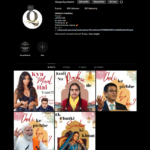Akanksha Chaudhary -
I would not have been a Journalism student if there was no internet. This statement is enough to claim the importance of the internet in the new media landscape.
There was a time when breaking news meant rushing to meet print deadlines or waiting for the next broadcast, but now, a single tweet can spread the news to thousands in just seconds. I experienced this firsthand during a recent major event when reporters were live-tweeting updates, sharing videos, and interacting directly with their audience while the story was still unfolding. It was incredible to see how connected everyone felt to the news as it happened in real-time.
This shift to digital journalism has completely changed how we tell stories and engage with our audiences. The internet has expanded our research capabilities, allowing us to fact-check quickly and cover a wider array of stories that matter to people. With social media, sharing breaking news has become more immediate, turning our audience into active participants rather than just passive consumers.
Incorporating multimedia elements like videos, images, and infographics has helped us craft more compelling narratives that resonate with our readers on different levels. The internet opens the door to diverse global audiences, breaking down barriers and encouraging cross-cultural understanding. By embracing data-driven journalism and citizen reporting, we can uncover new insights that enrich our storytelling.
Moreover, the internet makes distributing information much easier, enabling us to reach larger audiences more efficiently than ever before. While challenges like misinformation are real, the digital age continues to shape journalism in ways that inspire us to connect, inform, and engage readers around the world.




No responses yet